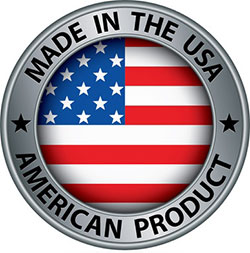Blog
Made in the USA: How American Manufacturing is making a Comeback
Here at Wallpeg Store, all of our products are proudly made in the USA. As such, we celebrate stories related to American manufacturing and other retailers who choose to create their goods here in the United States. The following is a guest submission from a friend of the store…
 There are positive signs for the growth of American manufacturing, an important component of the creation of new jobs in the industrial sector. This positive outlook stems from an emerging trend referred to as ‘new-shoring,’ not to be mistaken with ‘re-shoring,’ the process of bringing previously outsourced jobs back to the U.S. from overseas.
There are positive signs for the growth of American manufacturing, an important component of the creation of new jobs in the industrial sector. This positive outlook stems from an emerging trend referred to as ‘new-shoring,’ not to be mistaken with ‘re-shoring,’ the process of bringing previously outsourced jobs back to the U.S. from overseas.
New-shoring refers to the creation of entirely new positions that previously didn’t exist in the manufacturing sector. Through innovative technology such as 3D printing and enhanced design software tools, many of the barriers of entry to manufacturing have come crashing down, enabling startups and enterprise organizations alike to base their production operations at home in the United States.
Offshoring vs. New-Shoring
In an attempt to reduce costs, many manufacturers have historically looked overseas to produce their products. Overseas destinations where costs for materials, labor and insurance offered attractive alternatives for mass production.
While the reduced costs are attractive, offshoring the manufacturing process comes with additional risks such as quality control and the exposure of intellectual property in an environment that may be more accessible to competitors. Additionally, with many developing countries enjoying a surging economy for the better part of the last decade, the global costs of labor are continuing to rise, and the net savings of offshoring are not what they used to be.
As such, many manufacturers are looking to create their own local supply chain, through a process known as new-shoring. Through online tools and organizations based in the United States that help facilitate new-shoring and local manufacturing, businesses are increasingly finding it possible to create products that are again 100% made in the U.S.A.
An Uptick in Job Growth
Since the 2008 recession, U.S. jobs in the manufacturing sector have enjoyed steady growth. From 2010 to 2014, 762,000 jobs were created in manufacturing. That’s heartening news when compared to the years between 2005 and 2009 when 2.8 million jobs were lost.
The Obama Administration took steps to save close to a million jobs in the auto industry by shoring up General Motors and Chrysler. At the same time, they committed to doubling American exports for the five-year period between 2009 and 2014.
While actual increase was ultimately about half of what was originally projected, the economy has benefited nonetheless. The Federal Reserve raised its key interest rate this month for the 1st time since dropping it nearly zero in December of 2008, signaling an acknowledgement of economic recovery.
Lingering Weakness Remains
Adding more than 700,000 new jobs in five years shows a healthier manufacturing sector. However, the results are less encouraging compared to the year 1998 when 17,619,000 American workers were employed by factories and other areas of manufacturing. During her press conference to announce the recent interest rate increase, Fed Chief Janet Yellen acknowledged the lingering weakness in the manufacturing sector, stating, “There are pressures on some sectors of the economy, particularly manufacturing, and the energy sector…but the underlying health of the U.S. economy I consider to be quite sound.”
Recovery, But Fewer Jobs
Part of the explanation for the healthier manufacturing sector but the lower number of regained jobs is technology. More product can now be produced with fewer workers through the adoption of processes such as automation.
To illustrate this point, consider that during first decade of the 1900s, more than 40% of the population lived on farms. Today, fewer than 2% live in rural areas, but food production is far greater. Better technology and equipment have enabled the agricultural industry to produce more food with fewer workers.
New-shoring is one component that will help improve job growth in the manufacturing sector. With the speed at which companies must refine and improve their products in the digital age, having the ability to more directly control manufacturing will motivate more manufacturers both large and small to base their operations closer to home, hopefully assisting the comeback in American manufacturing.